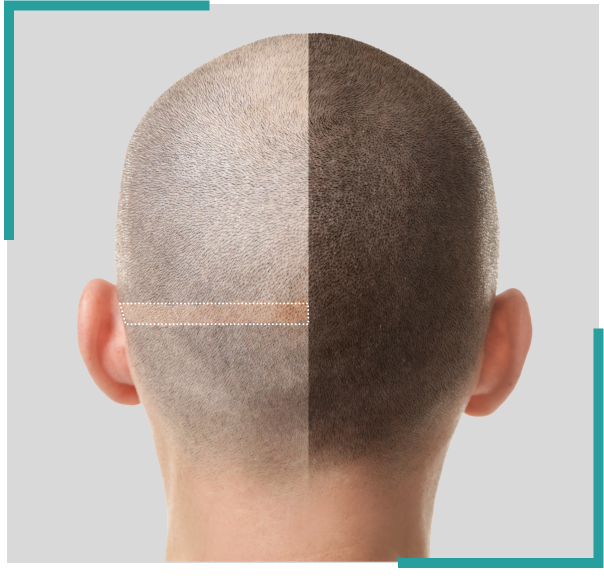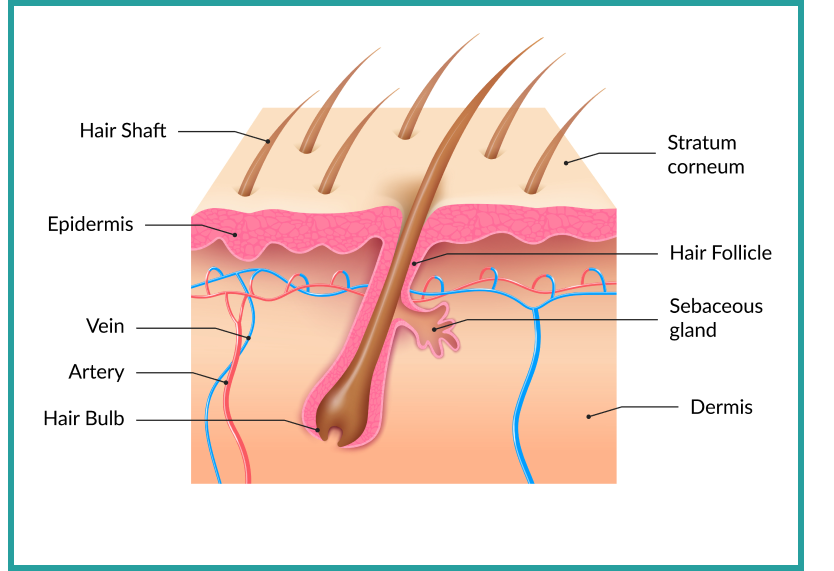Composite Hair Transplant
Composite Hair Transplant
MedLinks uses a modern technique known as Composite Hair Transplant, which combines two methods of hair transplantation – Follicular Unit Extraction (FUE) or strip method (FUT) with the Perfect-i technique. This technique ensures effective coverage even in advanced stages of hair loss such as Grade 5 and Grade 6.
Dr. Gaurang Krishna is one of the pioneering Doctors growing this innovative treatment. Composite Hair Transplant is one of the best hair treatments as this technique maximizes donor extraction from the scalp area. It combines the best of FUE and FUT to generate far better results than either treatment on its own. In the composite hair transplant, the surgeon carefully selects and designs a combination of grafts from the patient’s donor area, which is generally the back or sides of the scalp. These grafts are then carefully implanted into the recipient area, where hair loss or thinning has occurred.
The Composite Hair Transplant usually requires multiple sessions, and patients can expect to witness initial hair growth within a few months following the transplant. Over time, the transplanted hair continues to grow, resulting in fuller and thicker hair.

Composite Hair Transplant
-
Improved hair density
1
-
Natural-looking results
2
-
A well-covered scalp and healthier hair
3
-
Long-lasting results
4
Advantages of Composite Hair Transplant
-
Improved hair density
1
-
Natural-looking results
2
-
A well-covered scalp and healthier hair
3
-
Long-lasting results
4


Who is an ideal candidate for Composite Hair Transplant?
Composite hair transplant may be recommended or preferred for those who experience significant hair loss or baldness and seek a more comprehensive and effective solution.
Further, this treatment is generally recommended for those who require a higher number of grafts.
Case Studies
Precautions to be taken!
Before Surgery
At MedLinks, we advise patients to follow some basic precautionary measures before undergoing Composite Hair Treatment.
Two Weeks before Transplant
- First, patients should confirm their appointment with our experts after undergoing any laboratory tests.
- Let our experts at MedLinks know if you are taking any medications, including blood thinners or broad beta-blockers.
- Meet our experts to discuss any ongoing medical conditions.
- Do not shave or cut your hair in the recipient areas. Keep the length of the donor area (back and sides) normal.


One Week before Transplant
- Patients should halt the consumption of Vitamin B, E or any kind of multivitamins that contain them.
- Stop consuming anti-inflammatory medications (NSAIDs).
- Let our experts know if you’re consuming any other prescription medicines, including heart and blood pressure medications.
- Stop smoking a week before the procedure. Cigarettes contain nicotine that constricts blood vessels while decreasing the blood flow to the scalp.
Three Days before Transplant
- Stop consuming alcoholic beverages as they can result in adverse reactions and side effects.


The Day of Transplant
- Wash your hair properly with shampoo. Do not use any kind of gels, sprays or other hair styling products.
- Wear loose and comfortable clothes. Clothing that needs to be pulled over the head may damage the grafts immediately after the surgery.
- Avoid wearing any cologne, perfumes or deodorants.
- Have a light breakfast. However, do not consume coffee or any caffeine beverage as it may increase bleeding and sensitivity towards medications.
- The surgery uses sedatives and medications that can make you feel drowsy. We advise you to arrange post-op transportation.
Precautionary Measures after Composite Hair Transplant
Composite Hair Transplant generally offers a quick recovery time, patients can expect their newly transplanted hair to grow after 10 weeks. They get long enough to be groomed in about 6 months and fully grown in 1 year after the surgery. However, patients should take necessary precautions for ensuring the most promising results.
Here is a list of precautions that patients need to follow after the surgery:
Don’t sleep or lie on your face as it might cause swelling. Sleep with your head elevated to 30 degrees, at least for 3 days
Don’t consume alcohol or alcoholic beverages for at least 3 days after the surgery.
Don’t comb or brush hair in the implanted area for 7 days after the procedure.
Avoid visiting dirty or dusty environment for at least a week after the procedure.
Shampoo very gently for the first week after the procedure. Since grafts are permanent, one can resume to normal hair care and shampooing after 10 days.
Restrain yourself from smoking for at least 2 weeks after the surgery.
Avoid consuming any kind of medications like that affect blood flow.
Don’t have a haircut for at least 3 weeks after the surgery.
Don’t expose the implanted area to direct sunlight for a month after the surgery. Cover your head with a hat or a cap to avoid direct exposure to strong sunlight.
Don’t color or dye your hair for at least 4 weeks after the surgery.
Consult our experts for prescription medicine in case of pain.
Frequently Asked Questions
Generally, a hair transplant process is safe when performed on a healthy scalp. Hair transplant procedures are designed to provide permanent hair-bearing areas where the hair cycle of shedding and regrowth can occur naturally with minimum possibility of hair loss.
A highly experienced, expert hair transplant surgeon and a team like ours take care of these aspects while performing hair transplant surgery. However, one cannot rule out that an individual’s healing abilities and associated conditions influence the outcome.
Everyone loses hair daily at a rate of around 50 to 150 individual hairs per day. Usually, the hair grows back. If the hair follicle is thinned, nevertheless, this re-growth does not happen. All men experience some extent of gradual hair loss in their lifetime as a consequence of natural aging and transformations in the male hormone androgen. Women also may undergo hair loss.
Yes, it works! The transplanted hair is removed from the back of the scalp (donor site) and moved to the bald site (recipient site).
The transferred tissue is not “rejected” as it is not foreign tissue. The transplanted hair retains its characteristics; texture, colour, growth rate, and curl, after transplantation and re-growth.
Age is an essential factor. The suggested age is normally above 25 for men. Having a hair transplant way too early may lead to undervaluing hair loss that will result in a long-term unnatural hair pattern. Needing to be repaired at a later date.
Everyone is treated as per their needs, necessities and budgets to provide the highest most appropriate service possible. Many variables need to be taken into consideration such as hair type, the confidence of the patient, expectations and results which are best dealt with via individual consultancy and discussion.
Looking for guidance?
Book a consultation today and clear all your doubts with MedLinks!

Looking for guidance?
Book a consultation today and clear all your doubts with MedLinks!






























